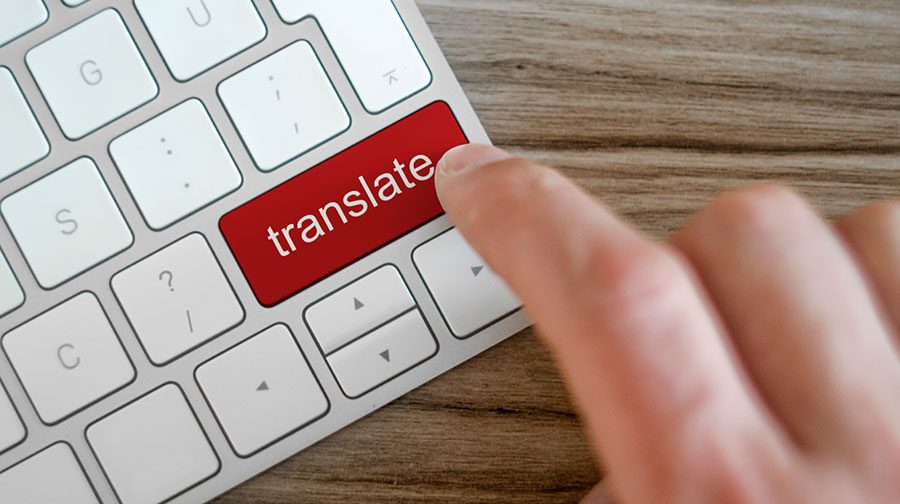




Whether you're a tourist who wants to feel comfortable in a new city or looking to expand your business to another country, Google Translate is there to help. Google Translate was launched in 2006 using Phrase-Based Machine Translation (also called Statistical Machine Translation). These first translation systems worked by building statistical models of relationships between words, phrases, and sentences and then applied that model to convert text into a new language.
Since 2016, Google Translate has upgraded to a Neural Machine Translation (NMT) engine, using advanced algorithmic translation and AI to utilize “deep learning” techniques.
Google Translate is a valuable tool for delivering content to people worldwide, and it currently supports 133 languages. There are several ways to use Google Translate through a computer or smartphone app. Unfortunately, not every Google Translate solution is available for every language. Here's how to utilize it:
The pros and cons of Google translate impact professional translators and anyone who chooses to use it as a translation tool. Some advantages of Google Translate include:
Speed and volume:NMTs are fast, translating millions of words almost instantly. Google Translate can produce thousands of words in seconds, something that would take human linguists a full day. NMTs can handle high volume projects and work with your CMS to organize content and retain context throughout the process.
Consistency and Accuracy: Translations done by NMT create accurate, contextual information. NMT translates whole sentences rather than individual words, making translations faster and more accurate. NMT also requires less memory and data to perform well.
Save time and money: AI-based translation can save time and money. While human translators won’t be replaced entirely, an AI-based translation can offer machine translation that results in easier editing. This can significantly reduce the cost and time required by human translators. In addition, for companies with limited resources, an AI-based translation offers an opportunity to scale globally.
Google Translate is a beneficial tool, but it’s not without drawbacks.
Accuracy: Google Translate’s accuracy can vary greatly. It will not provide the same level of quality for less common languages than it would Spanish or French.
Cultural context: Google Translate is not capable of applying human logic or context to its translations. It struggles with cultural factors like traditions, local dialects, and holidays.
Grammar and layout issues: Google Translate does not consider grammar rules, so it often creates translations that contain grammatical errors. There’s also no quality control or adaptation of the text to specific jargon, layout, industry, or market. Finally, Google Translate doesn’t consider web design when translating text, which can affect your website layout and user experience as a whole.
MotionPoint human translations are deployed by professional linguistics, while Google Translate is a machine-only approach that uses artificial intelligence (AI) technology.
Here is an example of how Google Translations compares to our expert Human Translations:
Spanish Segment: ¿No sabe bien qué significa traducir un sitio web? Le contamos todo sobre tecnologías de traducción, prácticas comunes y mucho más.
This text Translates to…
Human Translator: “Mystified by website translation? Get answers to your questions about translation technologies, best practices and more” by a human translator.
Google Translate: “Not sure what it means to translate a website? We tell you all about translation technologies, common practices and much more” by Google Translate.

While there are pros and cons of machine translation, there are situations when using machine translation can be useful:
There is a lot to translate: Website and large documents require consistent, fast machine translation. Tools like Adaptive Translation™ use AI and NMTs to deliver the quality you need, with an option layer of human post editing.
Where nuances are not important: Materials that offer straightforward content can benefit from machine translation. For example, software documentation or technical manuals are materials that don’t need cultural context or flowery language.
If a translation budget is limited: Companies turn to machine translation for their work because machines cost less than human labor. However, to lower costs and maintain the integrity of the translated text, some businesses prefer to use a mix of both machine and human translators.
Where content is subject to change: Content such as customer reviews, emails, or FAQs are generated quickly, have only one-off usage, or are only relevant for limited amounts of time. Therefore, their quality doesn’t necessarily need to be as high as that of professional documents.
Here’s the bottom line: Google Translate isn’t the right solution for website translation. The best website translation tools and services will combine machine translation and human translation.
In order to get the best results from machine translation, you need to invest in technology that is always being optimized and trained to fit your needs. This will save you time and money. MotionPoint’s technology can save you up to 60% on human translation costs without sacrificing quality! Learn more today.